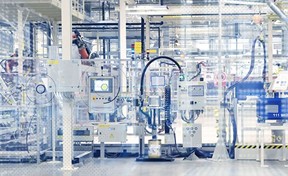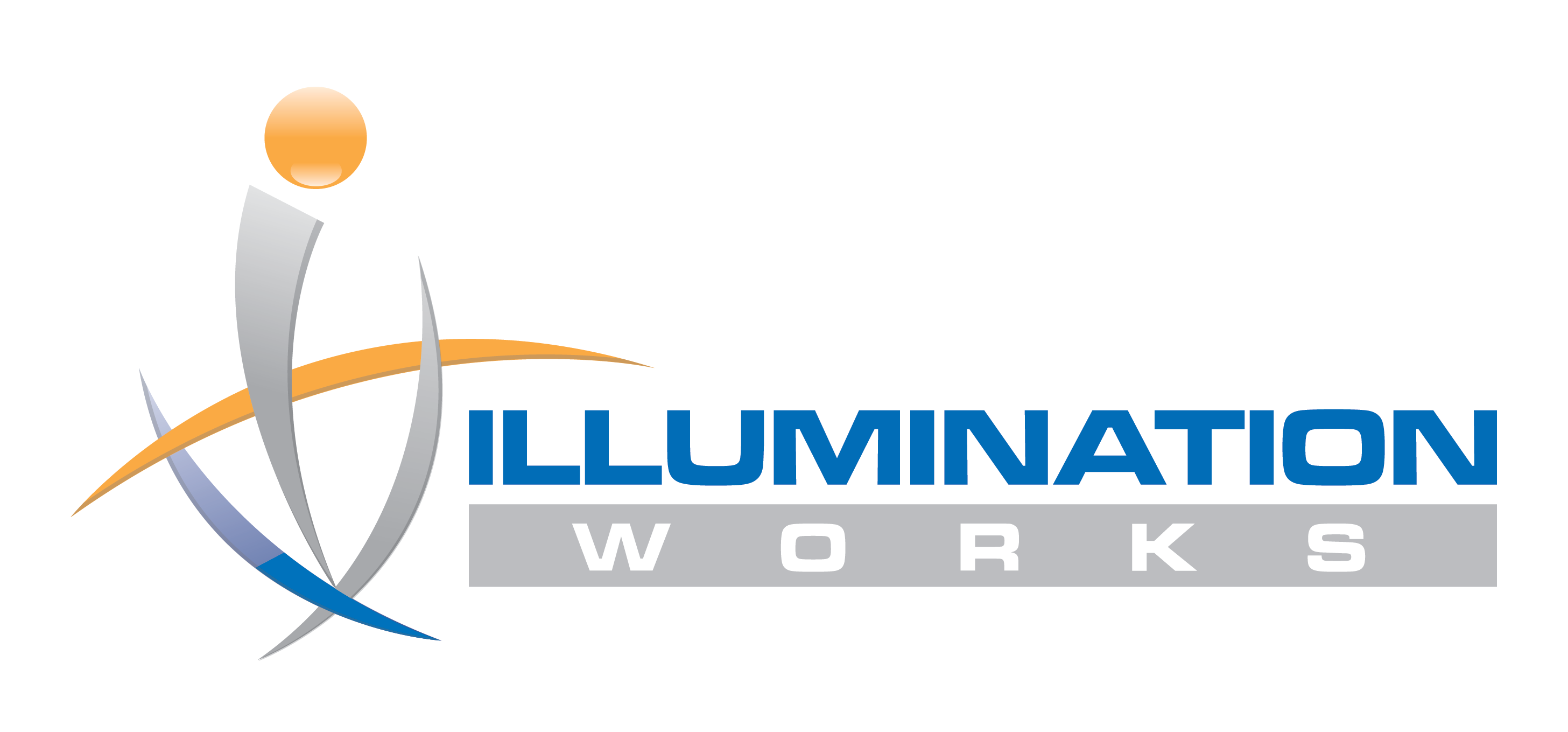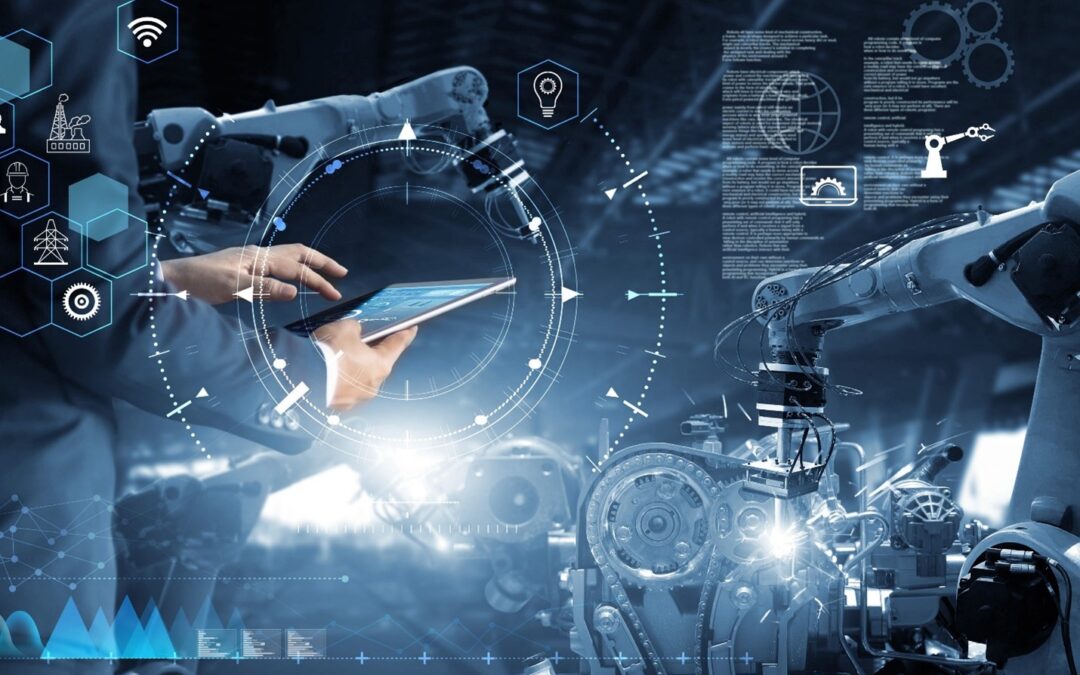Earlier this year, Illumination Works conducted a live webinar featuring industrial internet of things (IIoT). We sat down with Jon Mitchell, CEO/CTO, to delve deeper into this immersive Smart Factory/Industry 4.0 demonstration, which was developed in our Innovation Lab and created to show the inner workings and applicability of an IIoT platform to manage a machine shop.
To start, can you explain what “Smart Factory” means?
The term Smart Factory refers to ongoing automation of traditional manufacturing and industrial practices and processes leveraging modern technologies, such as IIoT, Advanced Analytics, Big Data, and Cloud services. Things we can do today in 2021, were not possible 10 years ago, and with the evolution of IIoT, we can now connect people, products, and processes to power organizational digital transformation. Using industrial IoT platforms, companies connect, monitor, analyze, and act on data in new and innovative ways to maximize revenue, reduce time, reduce costs, improve quality, and increase worker safety and compliance.
Can you tell us about the micro-model machine shop simulator use case you chose?
The use case for our webinar was a manufacturing plant with three main blocks of equipment data that we focused on – CNC machines, power meters, and environmental systems. Each of these was configured to give us a certain set of data that we consume into the IIoT ThingWorx platform.

- CNC Machines – Data about the job runs
- Power Meters – Data about power consumption
- Environmental Systems – Data about the environment such as an HVAC machine

Can you tell us about the Factory Advisor application you and your IoT team developed?
As manufacturing clients increase the number of machines that are instrumented and network enabled, the volume of data available to monitor the details of a facility increase exponentially. To be more equipped to support these clients, we developed the Factory Advisor application leveraging the micro-model machine shop simulator. Having a central monitoring and management system is critical in large manufacturing plants and repair facilities.

Our goal was to combine controls-managed sensors and simulated data to build and utilize the smart Factory Advisor capabilities. For this demonstration, we presented industrial transformation capabilities to modernize factory operations with consolidated measure, management, and analytics, which sets the stage for iterative capability development and product enhancements including predictive analytics for quality escapes (bad parts) and plant equipment.
With this in mind, we developed the web-based user interface on ThingWorx Foundation 9 and ThingWorx Kepware. This interface enables facility operations staff the ability to monitor and manage the volume of available information.
With ThingWorx-based applications like Factory Advisor, organizations can keep operations running by optimizing repair/replace/overhaul with condition-based monitoring and maintenance. They can also identify environmental issues by connecting to the environmental systems and sensors for worker safety and OHSA compliance. For example, if we look at manufacturing data, they will be able to monitor and manage quality escapes during the machining process.
Why use ThingWorx Kepware?
From an edge perspective, we wanted to be able to capture controls data, so we are using a product called ThingWorx Kepware. This software simplifies the process and provides a gateway to all the controls data. We also use ThingWorx Kepware to reduce the complexity and the amount of traffic that is on our IP network.

Can you explain the lab simulation technology that you created?
Check out this quick tour of our physical simulated lab (only 41 seconds)
We wanted to make this simulation as real as possible, so we have a functioning HVAC system with air conditioning, sensors, vent fans, and heaters. We are using thermal electric chips to do that activity, but the system will be able to blow cold and hot air and be able to control itself with those different sensors.
We also have power relays, so the ability to dynamically and electronically, through bit-level interaction, turn these pieces of equipment on and off, providing the physical plant piece of this simulation. We can also measure the power consumption. For our controls network, we have a Honeywell RL6N that acts as the brains of monitoring and managing and turning all of the different pieces on for the HVAC system and digital switch controls.

We leveraged a Dent Power Scout to measure our power consumption. Both the Honeywell and the Dent talk to a server, which is a Honeywell Titan 8000 and can be thought of as a building controller upon which many different things can be connected to provide a consolidation point. The Titan sends the data to the Kepware software, and from there we have a live connection into ThingWorx. We are mapping that data so there is an endpoint in ThingWorx where we are recording that information and then from there is where we are creating our domain model and building our user interface.
In the CNC machine simulation, we’re using microprocessors as there is not ample power or space in the office for an actual CNC machine. So, the next best thing was to simulate that data based on sample data and build scripts to allow us to text our hypotheses in our code. We have a semi-dynamic connection to ThingWorx, the scripts we are running are generating information and then sending them to ThingWorx. We have these connections mapped to a ThingWorx “Thing”, and that Thing represents the physical object and acts as a connection and storage point for that data that can then be pulled into the ThingWorx Mashup tool to design the user interface.
Last, what are some benefits manufacturers can gain from leveraging this technology?
First, I want to point out that this technology is not only beneficial to smart factories. The same technologies can be used to build smart factories of any type, such as a smart laboratory. No matter the type of smart organization you have, you can leverage your sensors to benefit in the following ways:
- Maximize Revenue: Scale to new markets, improve throughput, and unlock new business models such as products as a service
- Reduce Time: Get to market faster with rapid application development and extend legacy assets for new functionality
- Reduce Costs: Harness data from connected products and systems to boost productivity and efficiency while lowering costs
- Improve Quality: Make product, service, and factory operations more secure and scalable while improving service quality, reliability, and satisfaction
Check out the full Smart Factory webinar on our YouTube Channel. You can also reach out to us at ilw_info@ilwllc.com

About Jon
Jon Mitchell is the founder of Illumination Works and a leading authority in the digital transformation revolution. With hands-on experience in government and commercial implementations, Jon is an expert in data innovation, growing ILW’s expertise from traditional data warehouse implementations to a wide range of services including augmented/virtual reality, artificial intelligence, data science, machine learning, natural language processing, big data information frameworks, data visualization, application development, and cloud strategy. He provides day-to-day leadership of the senior executive team and sets strategic direction and vision for the organization. In 2006, he started Illumination Works to offer a better solution to clients and has never looked back.

